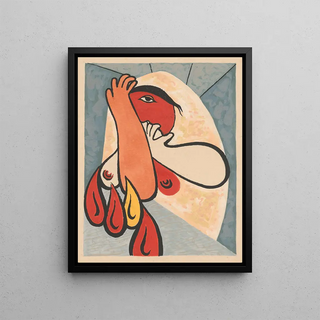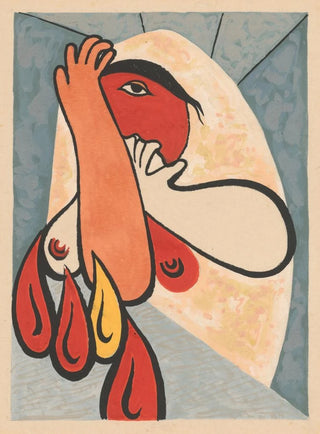Art print | Fire - Mikuláš Galanda


View from behind

Frame (optional)
Fire - Mikuláš Galanda – Captivating Introduction
In the fascinating universe of art, some works manage to capture the very essence of human emotion while transcending eras. "Fire - Mikuláš Galanda" is one such creation that, through its depth and intensity, resonates with those who contemplate it. This piece, both dynamic and contemplative, evokes feelings of passion and mystery, inviting each viewer to immerse themselves in a world where fire becomes a metaphor for life, transformation, and creativity. Galanda, through his vibrant palette and bold forms, succeeds in establishing a dialogue between the viewer and the artwork, making each gaze unique and personal.
Style and uniqueness of the work
Mikuláš Galanda's style is distinguished by its bold approach and refined chromatic choices. In "Fire," the artist uses shades of red, orange, and yellow to evoke the warmth and energy of a dancing flame. Every brushstroke seems to be a dance in itself, capturing the movement and fluidity of fire. The piece is characterized by controlled abstraction, where shapes blend and intertwine, creating a sense of depth and motion. This stylistic choice allows Galanda to transcend mere representation to offer a sensory experience. Viewers find themselves immersed in an atmosphere that is both warm and enchanting, where each glance reveals new nuances and interpretations.
The artist and his influence
Mikuláš Galanda is an emblematic figure of modern Slovak art, whose influence extends far beyond the borders of his homeland. His work is marked by a constant quest for innovation and personal expression, seeking to capture the essence of his era while remaining true to his roots. Galanda draws inspiration from contemporary artistic movements but manages to fuse them with traditional elements, creating a unique style that is entirely his own. His work has been praised for its ability to evoke deep emotions, question perception, and engage in a dialogue between the artist and the viewer. In "Fire," this influence is manifested by

Matte finish

View from behind

Frame (optional)
Fire - Mikuláš Galanda – Captivating Introduction
In the fascinating universe of art, some works manage to capture the very essence of human emotion while transcending eras. "Fire - Mikuláš Galanda" is one such creation that, through its depth and intensity, resonates with those who contemplate it. This piece, both dynamic and contemplative, evokes feelings of passion and mystery, inviting each viewer to immerse themselves in a world where fire becomes a metaphor for life, transformation, and creativity. Galanda, through his vibrant palette and bold forms, succeeds in establishing a dialogue between the viewer and the artwork, making each gaze unique and personal.
Style and uniqueness of the work
Mikuláš Galanda's style is distinguished by its bold approach and refined chromatic choices. In "Fire," the artist uses shades of red, orange, and yellow to evoke the warmth and energy of a dancing flame. Every brushstroke seems to be a dance in itself, capturing the movement and fluidity of fire. The piece is characterized by controlled abstraction, where shapes blend and intertwine, creating a sense of depth and motion. This stylistic choice allows Galanda to transcend mere representation to offer a sensory experience. Viewers find themselves immersed in an atmosphere that is both warm and enchanting, where each glance reveals new nuances and interpretations.
The artist and his influence
Mikuláš Galanda is an emblematic figure of modern Slovak art, whose influence extends far beyond the borders of his homeland. His work is marked by a constant quest for innovation and personal expression, seeking to capture the essence of his era while remaining true to his roots. Galanda draws inspiration from contemporary artistic movements but manages to fuse them with traditional elements, creating a unique style that is entirely his own. His work has been praised for its ability to evoke deep emotions, question perception, and engage in a dialogue between the artist and the viewer. In "Fire," this influence is manifested by






